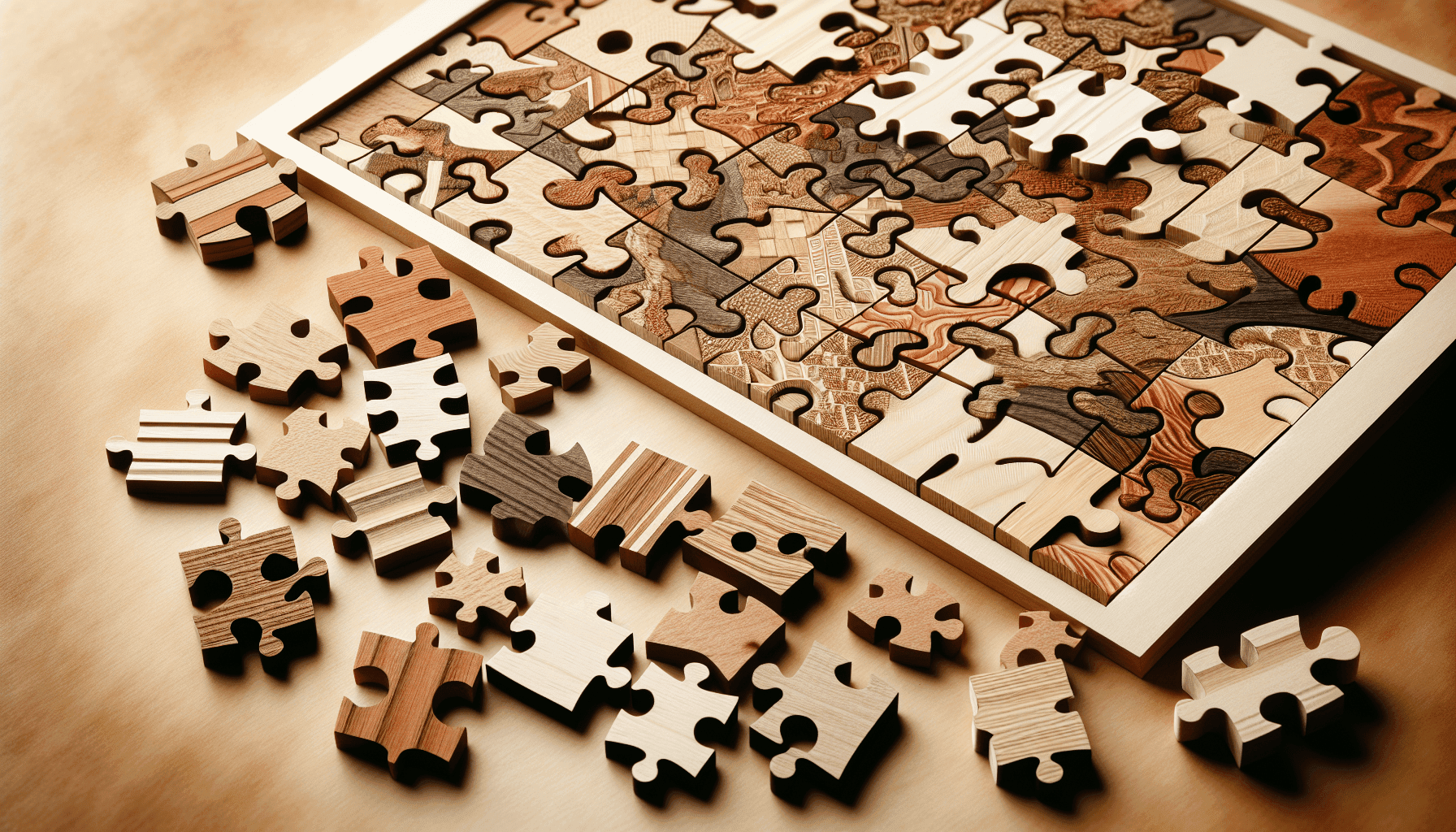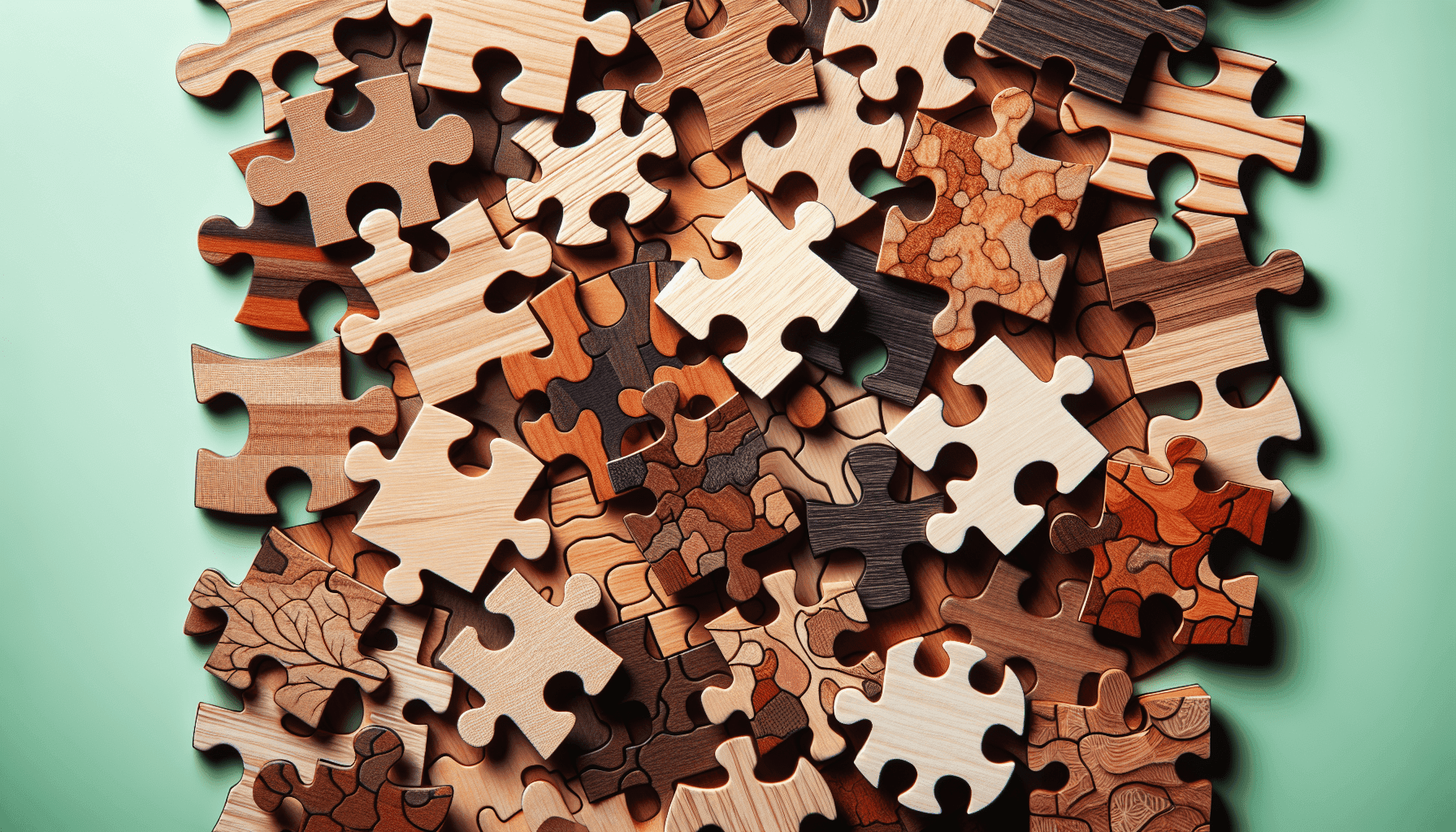Have you ever wondered what types of wood are used for laser-cut puzzles that captivate enthusiasts worldwide? Whether it’s a 3D wooden puzzle from brands like Robotime, Rokr, Ugears, Wood Trick, EWA, Vitascope, Wooden City, or Handmadecity, the selection of wood plays a significant role in both aesthetics and functionality. In this article, we are embarking on a journey through the fascinating world of wooden materials, focusing on their unique properties and how they contribute to the puzzle manufacturing process.
The Allure of Laser-Cut Wooden Puzzles
Laser-cut wooden puzzles are more than just a pastime; they’re a showcase of craftsmanship and creativity. Their intricate designs and the satisfaction of piecing them together appeal to both the young and the old. These puzzles often mimic real-life objects or fantastical creations, providing entertainment as well as educational value.
Why Wood Matters in Puzzle Crafting
The type of wood used in laser-cut puzzles affects not just the puzzle’s appearance but also its durability, weight, and how well the pieces fit together. Some woods provide a smooth, satisfying fit due to their density, while others may offer a more artistic finish due to their grain patterns. Understanding the characteristics of different wood types is crucial for both manufacturers and consumers who appreciate fine woodworking in puzzles.
Common Woods Used in Laser-Cut Puzzles
There are several types of wood commonly used in making laser-cut puzzles, each with its unique attributes. Here’s a closer look at some popular choices:
Basswood
Basswood is a favored choice among puzzle manufacturers due to its softness and fine grain, which allows for precise cuts and detailed designs. Its lightweight nature makes it easy to handle, especially for complex 3D puzzles. Additionally, basswood has a relatively neutral appearance, which can be easily enhanced with paints or finishes.
Pros:
- Easy to cut
- Lightweight
- Smooth finish
Cons:
- Less durable than harder woods
- Prone to denting
Baltic Birch Plywood
Baltic Birch Plywood is known for its strength and stability, making it another popular option for laser-cut puzzles. Its layered construction provides structural integrity, which is essential for puzzles that will be handled frequently. Baltic birch has a uniform light color and tight wood grain, making it ideal for both structural and decorative elements.
Pros:
- Strong and durable
- Minimal warping
- Consistent appearance
Cons:
- Heavier than basswood
- May be more expensive
Maple
Maple is a dense, hard wood that is often used for high-quality puzzles, offering excellent durability and a smooth finish. Its natural light color is aesthetically pleasing, and it can be easily stained or painted to match different designs. Maple’s strength is ideal for intricate laser-cut patterns that require precision and stability.
Pros:
- Durable and strong
- Attractive grain
- Smooth finish
Cons:
- More expensive
- Harder to cut
Mahogany
Known for its rich, reddish-brown hue, mahogany adds a touch of elegance to wooden puzzles. This strong and stable wood is valued for its beauty, making it a premium choice for artistic and decorative puzzles. Mahogany’s resilience and workability make it suitable for detailed and ornate designs.
Pros:
- Beautiful color and grain
- Strong and stable
- Long-lasting
Cons:
- High cost
- May be challenging to cut
Walnut
Walnut is another high-quality wood often used in premium puzzle pieces due to its deep color and fine grain. Its robust properties ensure durability, which is particularly important for puzzles that are intended to be displayed as finished pieces.
Pros:
- Rich color and grain
- Durable
- High-end appearance
Cons:
- Expensive
- Heavier material

Comparing the Wood Types
Each wood variety brings its own set of benefits and challenges. Understanding these differences can help you select the right puzzle for your needs or even inspire you to create your own. To summarize, the table below compares these popular wood types based on several factors:
| Wood Type | Strength | Weight | Appearance | Cost | Best Use |
|---|---|---|---|---|---|
| Basswood | Low | Light | Neutral | Affordable | Detailed cuts |
| Baltic Birch | High | Medium | Consistent | Moderate | Frequent handling |
| Maple | High | Medium | Attractive | High | Precision designs |
| Mahogany | High | Heavy | Elegant | High | Decorative pieces |
| Walnut | High | Heavy | Luxurious | High | Display puzzles |
Factors to Consider When Choosing Wood for Puzzles
When choosing a wooden puzzle, or if you’re considering making one, several factors should guide your decision.
Durability and Strength
Consider where and how the puzzle will be used. For longevity and frequent use, hardwoods like maple, mahogany, or walnut are ideal due to their strength and resistance to wear.
Weight Considerations
Weight can influence the ease of handling a puzzle. Lighter woods like basswood can be beneficial for larger or more intricate 3D puzzles that require extended periods of assembly.
Aesthetic Value
The wood’s natural grain and color are integral to the puzzle’s final appearance. Mahogany and walnut offer rich, decorative finishes, while lighter woods like birch provide a clean, modern look.
Cost Efficiency
Budget is always a key factor. Woods like basswood are budget-friendly, making them a great choice for large projects or when introducing new enthusiasts to puzzle crafting.
Customization Potential
For those who enjoy personalizing or painting their puzzles, a wood type that takes well to finishes and colors, such as basswood or maple, might be preferred.

Environmental Impact and Sustainability
In today’s world, where sustainability is often at the forefront of consumer decisions, understanding the environmental impact of wood choices is important. Many manufacturers are committed to using sustainably sourced wood. Certifications from bodies like the Forest Stewardship Council (FSC) can ensure you’re buying from a responsible source, preserving both the environment and traditional woodworking industries.
The Role of Sustainable Practices
Sustainable forestry practices aim to balance our need for wood with preserving forest ecosystems. Additionally, some companies incorporate recycled wood into their products, further reducing environmental footprints.
Caring for Your Wooden Puzzle
Once you have your wooden puzzle, proper care will enhance its longevity and appearance.
Avoid Excess Moisture
Wood is susceptible to damage from moisture, which can cause warping. It’s essential to keep your puzzle in a dry environment.
Handle with Care
While wooden puzzles are relatively sturdy, they can still be susceptible to rough handling. Always assemble and disassemble carefully.
Maintain with Cleaning and Polishing
Regular dusting and occasional polishing with a wood-friendly product can help maintain the luster of the pieces, particularly for puzzles on display.
Conclusion
The beauty of laser-cut wooden puzzles lies in the intricate details that only expertly chosen materials can provide. Each type of wood offers something unique, from the lightweight versatility of basswood to the luxurious finish of walnut. Whether you’re a puzzle enthusiast or a novice just beginning to appreciate the artistry involved, understanding the different wood types and their characteristics can significantly enhance your appreciation and enjoyment of these captivating creations.
Take a moment to consider these factors when selecting your next wooden puzzle. The right choice will bring not only hours of entertainment but also a timeless piece of art to admire and cherish.
Ready to start your 3D wooden puzzle journey? Click on any of the following links for our reviews:
All Categories | Boats | Clocks | Marble Runs | Musical Boxes | Musical Instruments | Puzzle Boxes | Trains | Trams | Trucks